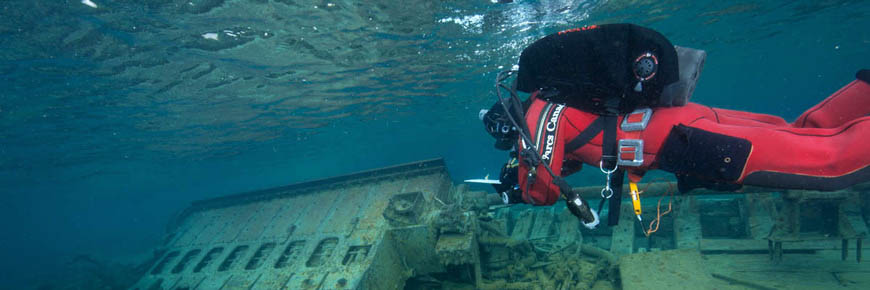Marc-André Bernier, Parks Canada’s underwater archaeology manager, discusses his team’s role in documenting and protecting submerged sites, as well as the importance of underwater archaeology in Parks Canada’s mandate. He also highlighted Fathom Five National Marine Park’s amazing learning and diving opportunities, which allow visitors to connect with Canada’s maritime past.
Underwater Archaeology
Underwater archaeology is the study of ancient sites located beneath the water’s surface in seas, rivers, and lakes, as well as on the shoreline. Submerged aboriginal sites such as fish weirs and middens; relics of ancient constructions such as wharves, canal locks, and maritime railways; sunken airplanes; and other submerged cultural heritage elements are all studied by underwater archaeologists in addition to shipwrecks.
Underwater archaeology follows the same technique and principles as land-based archaeology. All archaeology entails the meticulous examination of artefacts, structures, and features in order to reconstruct and explain previous human existence. Underwater archaeological fieldwork, on the other hand, is more difficult than land archaeology since it takes place in a more difficult environment.

Working efficiently underwater necessitates the use of specialized techniques and equipment. Staying warm during long dives is a constant concern, so underwater archaeologists frequently wear masks that cover their entire faces, dry suits worn over layers of warm clothing, or wet suits supplied with a flow of hot water in cases where the water is extremely cold, such as the excavation in Red Bay (Labrador). To communicate with persons on the surface or other divers, underwater communication technologies are utilized. The regulated use of specifically specialized equipment such as suction airlifts and miniature dredges is required to remove sediments covering underwater areas. Underwater data collection has its own set of difficulties. Notes and sketches are made on special underwater paper, while photo and video cameras are housed in waterproof housings.
Remote sensing surveys utilizing geophysical techniques, diving surveys to discover and map sites, site monitoring, and excavation are all examples of underwater archaeological fieldwork. Accurate recording of all aspects of an underwater archaeological project is critical to its success. When excavation is required, meticulous mapping and documenting are especially important because artefacts and other physical artefacts are permanently removed from their original contexts. Archaeologists hope to be able to rebuild the entire site using the data they collect while on the job.






